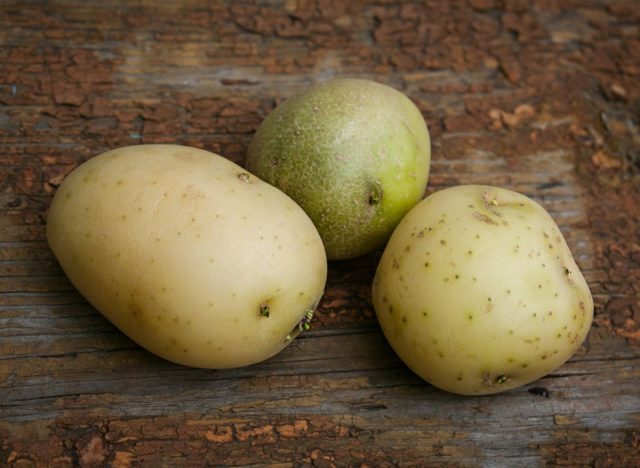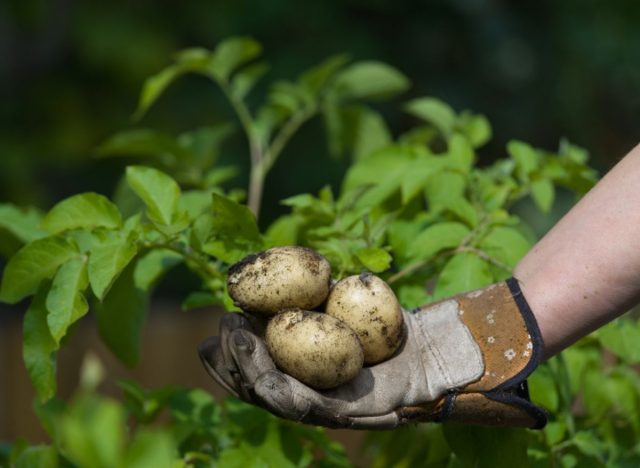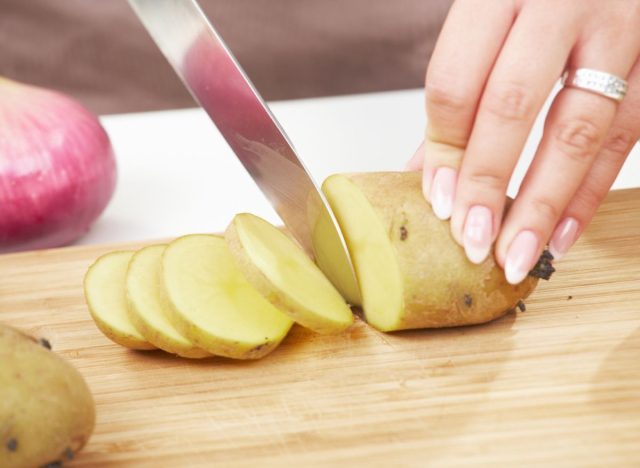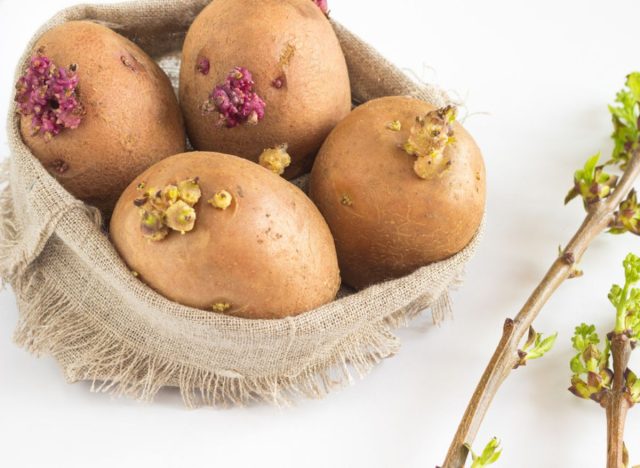As we strive to eat healthier, we often aim to boost our intake of healthy greens. Some reach for dark leafy spinach to boost our metabolism and others opt for an afternoon green tea for a much-needed caffeine fix. There is no denying the power of eating clean and green. After all, we live by the philosophy of eating the colors of the rainbow when it comes to consuming our daily fruit and vegetable intake and the greens are often the healthiest pick of all.
But when it comes to consuming green foods, green potatoes aren’t one of the first vegetables that come to mind. We already know that sweet and white potatoes are naturally rich in antioxidants, vitamins (B6 and vitamin C), potassium, and fiber. But what about green potatoes? Do they offer any health benefits like sweet and white potatoes? More importantly, is it safe to eat green potatoes? Toby Amidor, MS, RD, CDN, FAND award-winning nutrition expert, and member of the Eat This, Not That! Medical Expert Board, weighs in on the mysterious green potato and whether it should be a part of your diet.
Plus, find out What Happens to Your Body When You Eat Potatoes


Plants produce chlorophyll in the presence of light and potatoes are no different. However, since potatoes are grown underground, this exposure to light causes other changes in the potato that can be problematic.
Along with green chlorophyll, “another compound called solanine is also accumulating,” says Amidor. “Potatoes with a high concentration of solanine will taste bitter and are harmful when eaten in large quantities.”


In short, no. As noted by Amidor, the high concentration of solanine makes eating green potatoes a bad idea. Plus, WebMD points out that cooking a potato does not get rid of this toxic compound. While eating a green potato is not likely to kill you, if you ingest enough solanine it can cause all kinds of uncomfortable symptoms like vomiting, abdominal pain, diarrhea, and headache.


“It’s recommended that in order to be safe, you should not eat green potatoes or the green parts of the potato” Amidor informs. Just as you’d discard that odd-looking green potato chip lying at the bottom of your chip bag, the safest thing to do is to discard any green potatoes. “If there is only a small amount of green on the potato, you can cut around it and eat the remaining potato” she concludes. But, again, to be safe, it’s best to just return or toss the green potatoes. If it’s too late to return to potato to the store, Amidor says it’s safe to compost the potato, “The potato will not cause harm to the compost or bacteria within the compost,” she says.


Yes, the environment that you store your potatoes in has everything to do with the root vegetable’s coloring. Amidor shares, “Potatoes tend to turn green mainly due to improper storage. It’s recommended to store potatoes in a cool, dry, dark place where there is minimal light and no fluorescent light.” Also, be sure to inspect the potatoes that you are buying and avoid any with green spots or return any discovered green potatoes to the store.
Katelyn Chef
Source:










